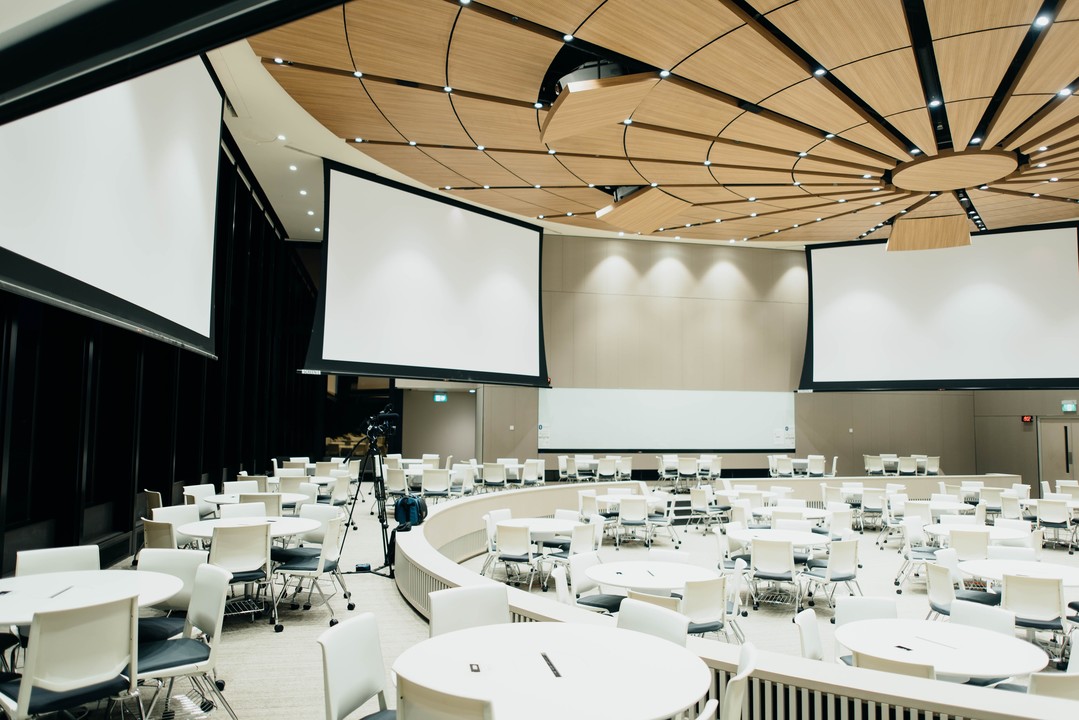
Standards in Enterprise AV: Where to Begin
By: Bill Thrasher
The end goal of an AV provider is to offer a seamless and easy to use customer experience. Across enterprise clients, this is paramount to ensure a certain standard of quality and capabilities is achieved. For larger clients with more secure and complex networks, partnering with a trusted AV solutions provider is the recommended way to offer the best possible end user experience across large deployments.
Standards in AV equate to offering the same level of quality and features no matter the client, the location, or the situation. The standardization of these experiences can be looked at in a few different ways.
Consistency is the Vision
Each enterprise landscape is different, with various pain points, needs and possible solutions. An AV partner must understand the client’s goals and vision, find a baseline strategy to achieve them, and match solutions as close as possible to the expected level of quality and reliability. While the details and tactics may vary from organization, whether its Skype or Zoom capabilities, Bluetooth, screen type, immersive audio options, wireless presentation platforms, or the right network accessibility, enterprises are all counting on one thing, a consistent user experience.
The key is to set the highest possible bar for user experience outside of a specific technology platform and align the technology to that clear vision… rather than settling for a limited use-case around the selection of a specific technology.
Make the Experience Effortless
Another key to achieving an optimal UX, while staying focused on consistency, is ensuring simplicity for the end user. AV must be effortless to the operator, with the interaction between human and tech should come second nature. With the rise of smart-spaces and artificial intelligence, AV providers are leveraging the integration of this new tech to make the end user experience as seamless and easy as possible. Here’s the twist - the front-end experience is simple, but the back-end involvement is quite complex. You should only focus on the task-at-hand and leave the “how-it-works” to the experts.
Some AV vendors try to shortcut this standard and end up oversimplifying their solutions, compromising consistency and quality in the process. Conversely, others over develop their front-end solutions and end up with an inconsistent, unreliable, over-engineered product. AV standardization is all about balancing both these key principles… simplicity and consistency.
Adapt for a Changing World
A deployment is not cookie-cutter for every enterprise project - be prepared to expect the unexpected. Develop consistency and simplicity of the AV vision for standardization while remaining flexible; constantly adapt to the changing needs of the end user and the emerging technology horizon. If the installation is too rigid, you will not be able to react with effectiveness or timeliness to the changes in technology capabilities, software enhancements, or operator behaviors and expectations.
The Value of Partnerships
Achieving this level of consistency with ease of use, while also maintaining adaptability, is heavily reliant on the type of AV provider you choose to partner with. There are three tiers of B2B relationships which determine the quality of your standardization outcomes:
● Extemporary
● Qualifiable
● True Partnership
Extemporary
An extemporary relationship is where an enterprise selects a different AV vendor for every project they undergo, typically through an open bid process. There is no consistency or ongoing relationship being built between the interfacing parties and the nature of the UX vision is often driven by a strict cost savings mindset… which has long-term, unexpected, hidden, high-cost ramifications for the enterprise.
Qualifiable
In a qualifiable vendor model, an enterprise selects a few vetted vendor providers whom they choose to work with. Projects are awarded based on location and cost, and standards are maintained at the enterprise level. While more efficient than an extemporaneous relationship, this qualifiable relationship leads to a lack of consistency in the end, with both vendor and client having only partial commitment to the UX vision. Different vendors will do different things very different ways. The mission critical variables of enterprise standards and institutional knowledge are held at a level far away from the project delivery teams, and the end results of deployment with varying delivery from project-to-project, can and will be felt.
True Partnership
To achieve a true seamless experience in standardized enterprise AV deployments, a fully committed partnership is essential. In this bonded relationship, there is one AV partner engaged as a cohesive part of the enterprise team, sharing the in the UX vision with complete trust and transparency. The partnership model is a collaborative environment of unending growth, where the end results are consistent, simple for the end user, and adaptable for the changing world. While true partnership is a large commitment, it is the only way to achieve true standards in enterprise AV.